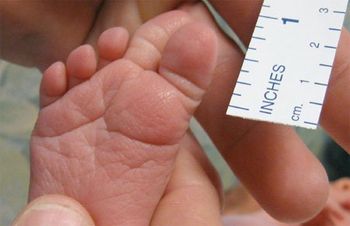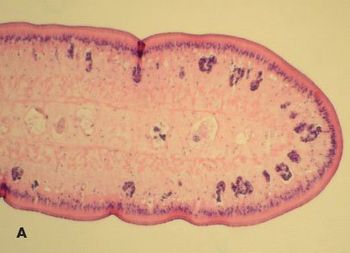
A study of patients with atrial fibrillation and one or more comorbidities showed that using left atrial appendage closure reduced rates of stroke, cardiovascular death, and systemic embolism more effectively than warfarin therapy.

A study of patients with atrial fibrillation and one or more comorbidities showed that using left atrial appendage closure reduced rates of stroke, cardiovascular death, and systemic embolism more effectively than warfarin therapy.

One critical component of the office of the future will be its environmental sustainability. This first article in a series looks at ecological ways to build a new pediatric practice office.

Three profiles of a magical waste basket, a reusable breastpump, and a t-shirt that helps prevent food allergies.

A collection of web resouces about pediatric obesity.

Journal abstracts and commentary on articles abotu fighting sleep apnea, a less invasive way to test for STIs after possible sexual assault, and colic's relation to maternal depression.

A teenager arrives in ED with fatigue and headaches. He is diagnosed with primary CNS vasculitis.

A list of diseases that can all be preventatively treated thanks to immunizations.

Letters to the editor about iron deficiency, encouraging vaccinating children in the hopsital, and more.

Teen with painful papules and plaques is diagnosed with Sweet's Syndrome

The ninth in a year-long series of commentary reviewing topics published in Contemporary Pediatrics 25 years ago. This month's article reviews the causes and management of hirsutism in adolescent girls.

A retrospective look at some of the photographs Contemporary Pediatrics received from its photo contest.

Editorial discusses what makes a future pediatrician.

Insulin analogs, advanced insulin pumps, and improved glucose monitoring devices make it easier to achieve glycemic control while decreasing the risk of hypoglycemia.

FDA thinks its important for the health of both a pregnant mother and her fetus to learn about a drug?s adverse effects: but is it?

Two studies show the lifelong impact of sexuality and body image on young teenagers.

After navigating a diagnosis of community-acquired pneumonia, pediatricians' attention turns to treatment and management, which is guided by age and clinical factors.

This well-formed, enlarged second digit on the right foot of a 2-day-old girl was noted at birth. All other digits were of normal size. The distal portion of the digit is deviated medially with a diminished triangular matrix unguis. No other musculoskeletal anomalies are apparent. There is no family history of congenital malformations or deformations.

A 15-year-old boy presented with a “string” protruding about 5 cm from his anus. He had had abdominal cramping that morning, prompting a bowel movement. After the stool, he passed a meter-long object that broke into the toilet. He attempted to remove the remaining “string,” but pulling on it induced left lower quadrant abdominal pain. He denied purposefully ingesting nonfood objects, choking, or chewing anything unusual. He also denied inserting anything or having anything inserted into his anus. He was otherwise healthy and had no significant medical or family history.

New research shows that there's a treatment for pediatric asthma that works swimmingly.

The two Kennedy siblings will be remembered for a lifetime of service for child health.

In the last week, FDA has approved two pediatric-related drugs - one (vigabatrin) treats infantile spasms and the other (levocetirizine dihydrochloride) targets symptoms of indoor and outdoor allergies and chronic hives in young children.

The number of injuries related to baseball that took parents and children to the ER in the last few years is on the decline.

Obesity in children ranks as the leading child-related health issue, according to a poll of two thousand adults.

The authors state that the adolescent daughter of the mother who was making inquiries “was given a prescription for a hormonal contraceptive.”

FDA has approved a new Haemophilus influenza type b conjugate vaccine as a booster dose for children between 15 months and four years of age.

A billion-dollar battle in Seattle is raging between a children's hospital and some locals over expansion plans.

A Las Vegas children's hospital resorts to staff cuts to make ends meet.

Contemporary Pediatrics asked its readers what they would say to President Obama regarding health care and pediatrics. No two responders hit the same points.

Americans have regarded health care as a priviledge to be purchased with wealth or misfortune. Health care is a right, not a priviledge.

No matter what you do, be very careful on trying to fund universal medical coverage by reducing Medicare.